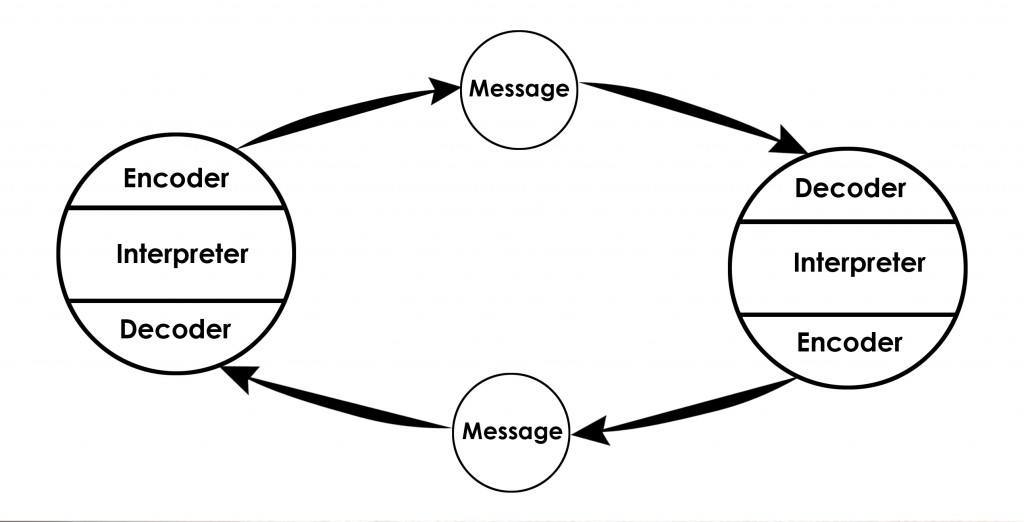It is a Circular Model, so that communication is something circular in nature
Encoder – Who does encoding or Sends the message (message originates)
Decoder – Who receives the message
Interpreter – Person trying to understand (analyses, perceive) or interpret
Note: From the message starting to ending, there is an interpretation goes on. Based on this interpretation only the message is received.
This model breaks the sender and receiver model it seems communication in a practical way. It is not a traditional model.
It can happen within our self or two people; each person acts as both sender and receiver and hence use interpretation. It is simultaneously take place e.g. encoding, interpret and decoding.
Semantic noise is a concept introduced here it occurs when sender and receiver apply different meaning to the same message. It happens mostly because of words and phrases for e.g. Technical Language, So certain words and phrases will cause you to deviate from the actual meaning of the communication.
Note: When semantic noise takes place decoding and interpretation becomes difficult and people get deviated from the actual message.
Advantage of Osgood model of communication
- Dynamic model- Shows how a situation can change
- It shows why redundancy is an essential part
- There is no separate sender and receiver, sender and receiver is the same person
- Assume communication to be circular in nature
- Feedback – central feature.
Disadvantage of Osgood model of communication
This model does not talk about semantic noise and it assume the moment of encoding and decoding.

No comments:
Post a Comment